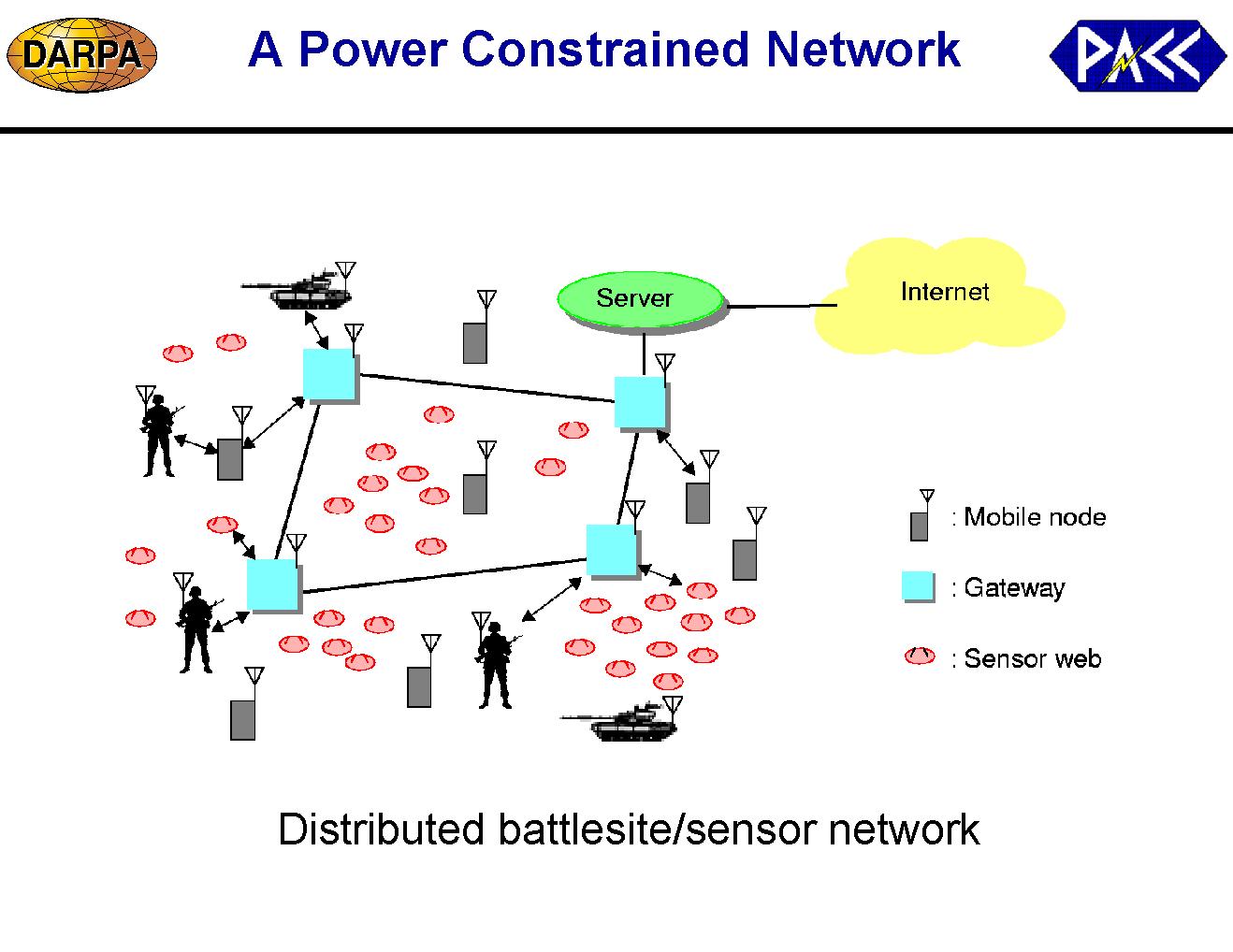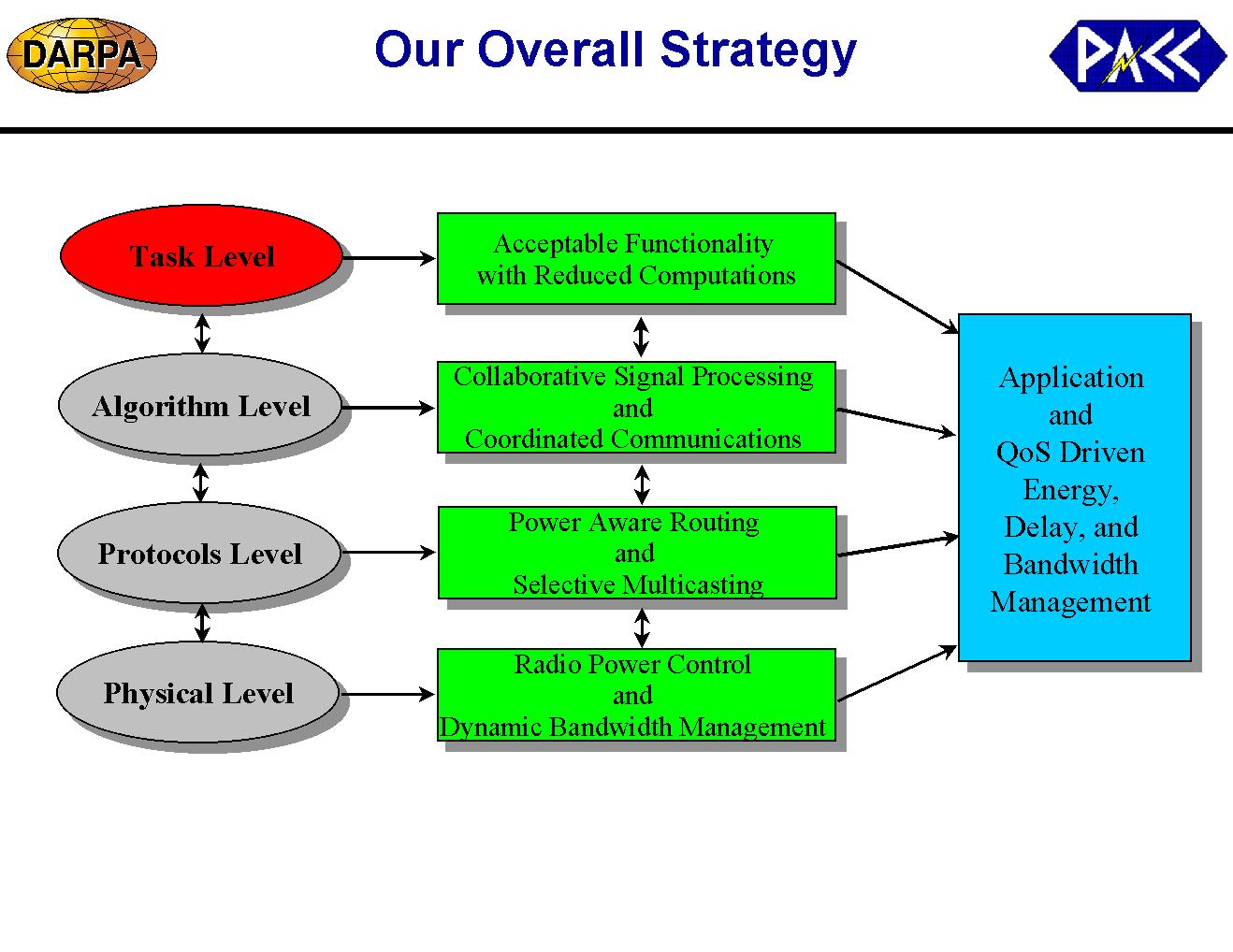
A distributed battlesite/sensor network consists of autonomous sensor webs, roaming users with mobile nodes, and gateway nodes to collect and disseminate information from the field. In such a power constrained distributed system, reducing energy consumption at all levels of computing and communications is essential to increasing the operational life of the system. The objectives of PACMAN project are to develop a mathematical framework that incorporates key features of computing nodes and networking elements that contribute to energy cost and use this framework for designing innovative energy efficient algorithms for signal processing and communication applications. The task of algorithm design optimized for energy, execution time, communication delay, and bandwidth opens up a new algorithm design space where the goal is to achieve power efficiency while meeting acceptable task-level functionality.
As part of this project, we will develop functional simulators that will enable us to evaluate algorithm level and communication level costs for different architectures. This research project is a collaborative effort between The University Of Southern California(USC) and The Portland State University(PSU).

Issues Addressed By The Project:
Our approach is to exploit energy saving opportunities at multiple
levels--from application algorithms to physical link level communications.With
a given application QOS, we will consider various tradeoffs including accuracy
and energy spent in computational algorithms,energy and performance in
coordinated communications, and transmission bandwidth and delay at the radio
links. For routing, multicasting, and channel access, we will leverage from
prior work on power aware protocols. We will also employ algorithm accessible
middleware hooks, based on Advanced Configuration And Power Interface (ACPI),
to control and conserve power in hardware subsystems. Using this integrated
approach, a significant reduction in (energy*Delay) will be achieved
for generic convincing applications.
